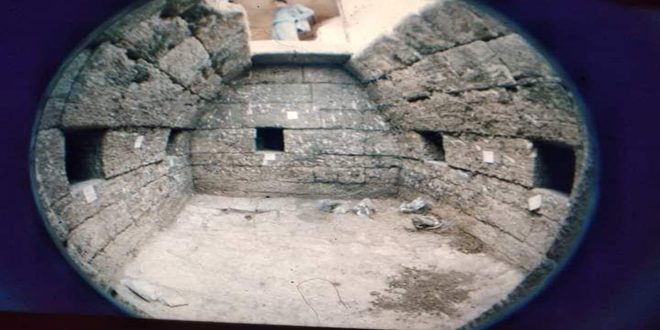Latakia - Sana
The history of the Ugaritic cemetery, which was discovered south of the Bay of Minet al-Bayda in Latakia, dates back to the thirteenth century BC.
According to the archaeological excavations that affected the site, it appeared that it was intended for a family of a prominent social position, as it was constructed with sandstone pieces under the surface of the earth in the form of a small room two meters deep, 3 meters long and 2 meters wide, according to what archaeological researcher Jamal Haydar confirmed.
The researcher, Haidar, who headed the excavation mission for the site 23 years ago, stated in a statement to SANA that he found in the tomb the entrance to a descending staircase and a floor-level ceiling covered with huge stone blocks.
Haidar explains that the tomb was filled with muddy agricultural soil, and it was excavated quietly and discovered inside it about 200 artifacts that formed the huge funeral furniture provided to the buried inside.
Haidar pointed out that these pieces are made of pottery, stone, metal, glass, ivory and bone in addition to human skeletons, indicating that the total of the archaeological finds that have been found is 150 archaeological remains, some of which are complete and some have been restored, while another part could not be restored.
The litter consists of pottery pieces such as jars of various shapes and sizes, jugs, saucers, bowls, pans, dolls for a bull, and others for a dog, and stone pieces consisting of spindles and sorts for decoration, bone pieces for a skeleton, bone pieces worked on them, and bronze decorations that are bowls, bowl, arrow heads, daggers, shanks, fishing hooks, and dolls Ghazal and lead pieces that are for fishing nets and silver ones that contain two rings for women.
Researchers believe that the Ugaritic tomb was a reflection of the importance of death for the Ugarites as a passage to another life through the way they were burying their dead, as most of the discovered structures were in a squatting position closer to the running position, meaning that the deceased when the tomb was closed would run to the other world as it was. The tombs are mostly family and contain several items for presentation, including decorative cups and vases.
Miss Ani

